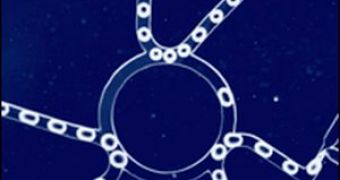If your PC gets into the water, after that you can throw it to trash.
But the future philosophy of making computers may be based on a watery support.
Plain nitrogen bubbles, directing the flow of liquid through networks of microscopic microfluidic tubes, could act as computer bits by sending liquid in one way or another.
Now a research team reported the achievement of a simple type of memory and microfluidics could turn into a more practical tool for diagnosis and searching for new drugs.
Microfluidics are developed to mix cells, proteins and various molecules with one another, allowing a rapid bacteria or viruses' tracking in small samples of fluid. "The trouble is the hydraulics normally used to pump liquids from place to place," said Manu Prakash, a physics graduate student at the Massachusetts Institute of Technology.
"We can design these beautiful microfluidic chips that are small, but everything that controls [the] fluids inside the chip is outside, preventing microfluidics from being complex yet small. These are not [things] you can wear on your watch. With bubble power, you can actually put intelligence inside the chip ? so all the chip needs is a power source", he said.
In the new specially shaped arrangements of tubes, developed by Prakash and his adviser, Neil Gershenfeld, the presence of a bubble in a tube marks a bit ( a 1), and its absence a 0.
In some tube configurations, a bubble in one tube shifts the direction bubbles flow in a nearby tube, the way that one current switches another current on or off in a common computer. "In other arrangements, two bubbles coming from opposite directions are fused together, or a bubble stays on one side of a reservoir until a second bubble enters the other side, displacing it. Besides just controlling the flow, bubbles of one fluid could carry biological samples through a second fluid," said Prakash. "The bubble method can perform all of the basic operations that a computer does", wrote the research team.
At the annual conference of the American Physical Society, Prakash presented a simple memory system for storing up to 100 bubbles. "Such a tool could be useful for pharmaceutical chemists who want to mix and match chemical building blocks in many ways to search for new drugs" he said. "That microfluidics designers currently start from scratch with each project, but the bubble technology could offer common building blocks for all microfluidics designs. That philosophy doesn't really exist right now," added Prakash.

 14 DAY TRIAL //
14 DAY TRIAL //